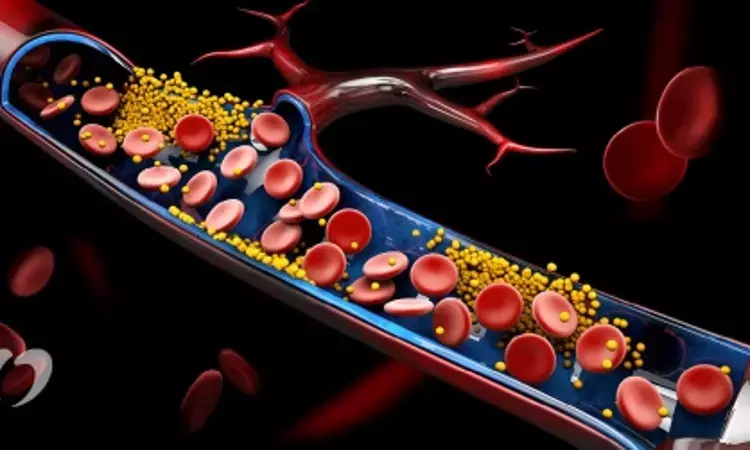- Home
- Medical news & Guidelines
- Anesthesiology
- Cardiology and CTVS
- Critical Care
- Dentistry
- Dermatology
- Diabetes and Endocrinology
- ENT
- Gastroenterology
- Medicine
- Nephrology
- Neurology
- Obstretics-Gynaecology
- Oncology
- Ophthalmology
- Orthopaedics
- Pediatrics-Neonatology
- Psychiatry
- Pulmonology
- Radiology
- Surgery
- Urology
- Laboratory Medicine
- Diet
- Nursing
- Paramedical
- Physiotherapy
- Health news
- Fact Check
- Bone Health Fact Check
- Brain Health Fact Check
- Cancer Related Fact Check
- Child Care Fact Check
- Dental and oral health fact check
- Diabetes and metabolic health fact check
- Diet and Nutrition Fact Check
- Eye and ENT Care Fact Check
- Fitness fact check
- Gut health fact check
- Heart health fact check
- Kidney health fact check
- Medical education fact check
- Men's health fact check
- Respiratory fact check
- Skin and hair care fact check
- Vaccine and Immunization fact check
- Women's health fact check
- AYUSH
- State News
- Andaman and Nicobar Islands
- Andhra Pradesh
- Arunachal Pradesh
- Assam
- Bihar
- Chandigarh
- Chattisgarh
- Dadra and Nagar Haveli
- Daman and Diu
- Delhi
- Goa
- Gujarat
- Haryana
- Himachal Pradesh
- Jammu & Kashmir
- Jharkhand
- Karnataka
- Kerala
- Ladakh
- Lakshadweep
- Madhya Pradesh
- Maharashtra
- Manipur
- Meghalaya
- Mizoram
- Nagaland
- Odisha
- Puducherry
- Punjab
- Rajasthan
- Sikkim
- Tamil Nadu
- Telangana
- Tripura
- Uttar Pradesh
- Uttrakhand
- West Bengal
- Medical Education
- Industry
Hypercholesterolemia linked with plantar fasciitis in individuals over forty years of age

Istanbul, Turkey: B. Catal, E. Genc, M.A. Cacan et al. have found in a study that - Significantly higher TC (total cholestrol) levels in PF (plantar fasciitis) patients in comparison with other orthopedic outpatients. Besides, being over the age of 45 and having duration of symptoms longer than a year is associated with higher cholesterol levels for PF patients.
Overuse injury of the plantar fascia is the most accepted theory about PF etiology. When the damage rate due to repetitive microtrauma exceeds the body's healing capacity, the PF begins to develop as a result. The conditions that increase microtraumas such as increased body mass index (BMI) and occupations that require prolonged standing or excessively running are also considered as risk factors for PF . Therefore, the PF treatment strategy is based on reducing micro-trauma, such as encouraging weight loss, biomechanical supports, or increasing body healing capacity, with tools such as extracorporeal shock-wave (ESWT) therapy.
The study included patients who presented to the orthopedics outpatient clinic with heel pain and were diagnosed with PF. The control group was composed of patients who came to the orthopedics outpatient clinic, with complaints other than heel pain. The two groups were compared in terms of epidemiological data, total cholesterol (TC) levels, and hypercholesterolemia prevalence. The authors also performed an in-group analysis of PF patients in terms of age, sex, body mass index, and duration of symptoms.
The results of the study were:
• There were 238 patients (mean age, 46.7) in the PF group and 240 patients (mean age, 47.9) in the control group.
• There was a significant difference between the PF group and the control group in TC levels (207.6 +/- 47.5 versus 195.1+/- 30.1, p = 0.001).
• Hypercholesterolemia (TC level > 240 mg/dL) was found in 22.7% (n = 54) of the patients in the PF group whereas in the control group this rate was 10.8% (n = 26) (p < 0.001).
• It was seen that the TC levels were significantly higher in patients over the age of 45 in the PF group (p = 0.038).
• TC levels were higher in PF patients with symptoms for longer than a year (p = 0.026).
This study highlights the effects of hypercholesterolemia on the musculoskeletal system
Further reading:
Is there a relation between plantar fasciitis and total cholesterol levels?
Bilgehan Çatal, Erdinç Genç, Mehmet Akif Çaçan, Yigit Güleryüz, Mehmet Emin Erdil
Foot and Ankle Surgery 28 (2022) 390–393
https://doi.org/10.1016/j.fas.2021.05.005
MBBS, Dip. Ortho, DNB ortho, MNAMS
Dr Supreeth D R (MBBS, Dip. Ortho, DNB ortho, MNAMS) is a practicing orthopedician with interest in medical research and publishing articles. He completed MBBS from mysore medical college, dip ortho from Trivandrum medical college and sec. DNB from Manipal Hospital, Bengaluru. He has expirence of 7years in the field of orthopedics. He has presented scientific papers & posters in various state, national and international conferences. His interest in writing articles lead the way to join medical dialogues. He can be contacted at editorial@medicaldialogues.in.
Dr Kamal Kant Kohli-MBBS, DTCD- a chest specialist with more than 30 years of practice and a flair for writing clinical articles, Dr Kamal Kant Kohli joined Medical Dialogues as a Chief Editor of Medical News. Besides writing articles, as an editor, he proofreads and verifies all the medical content published on Medical Dialogues including those coming from journals, studies,medical conferences,guidelines etc. Email: drkohli@medicaldialogues.in. Contact no. 011-43720751


